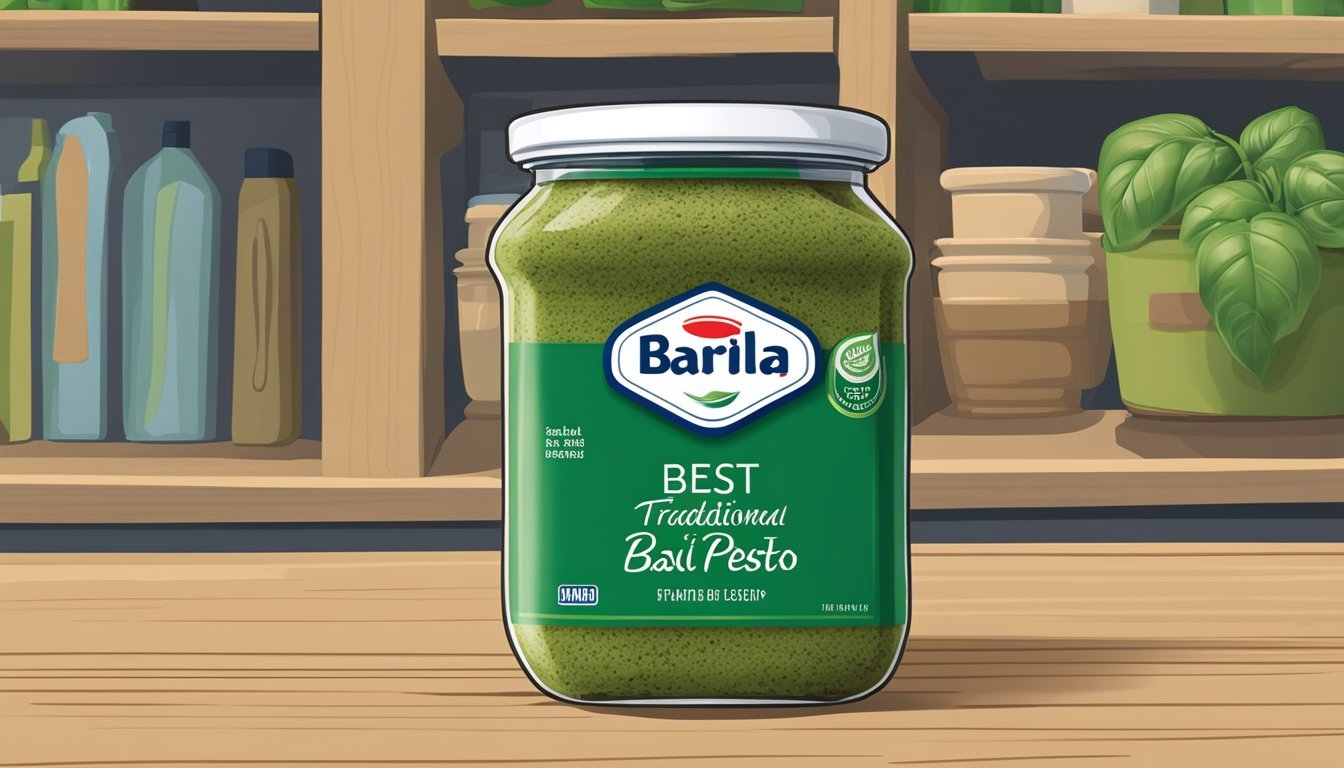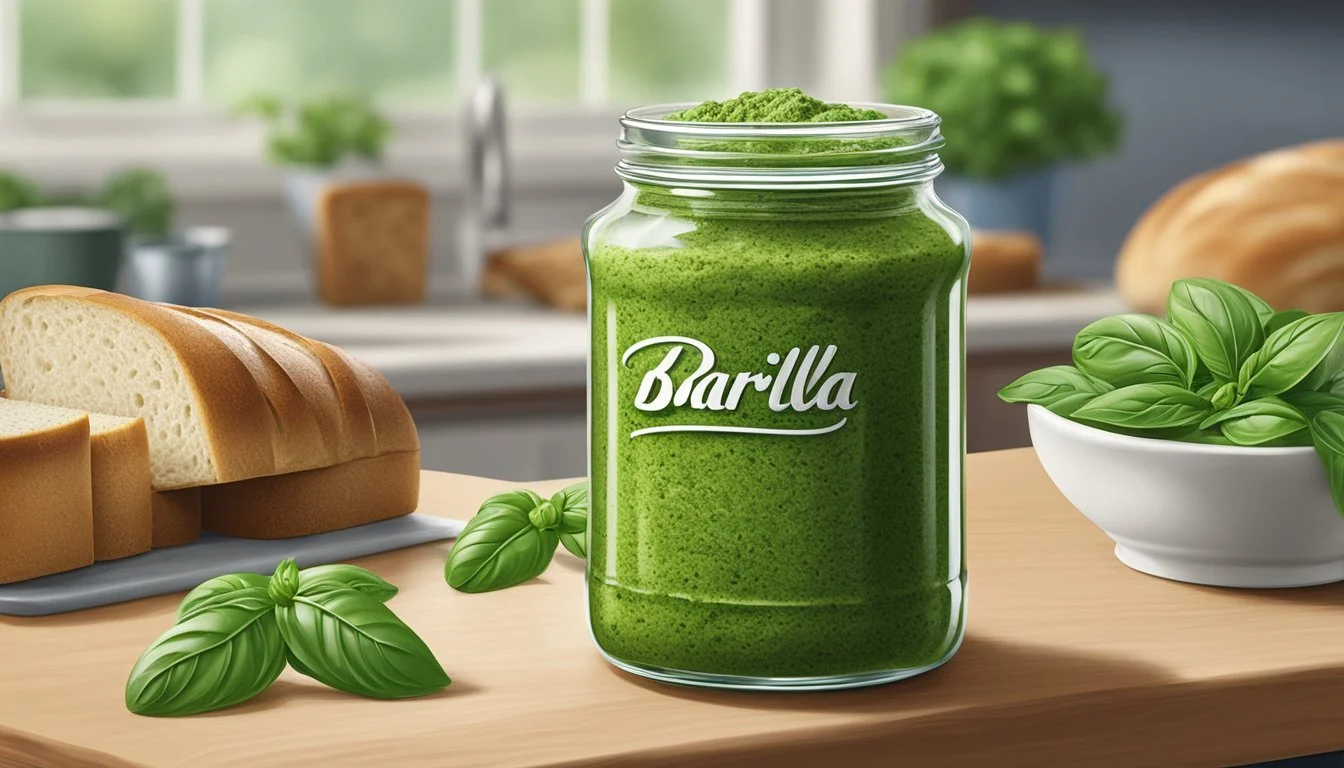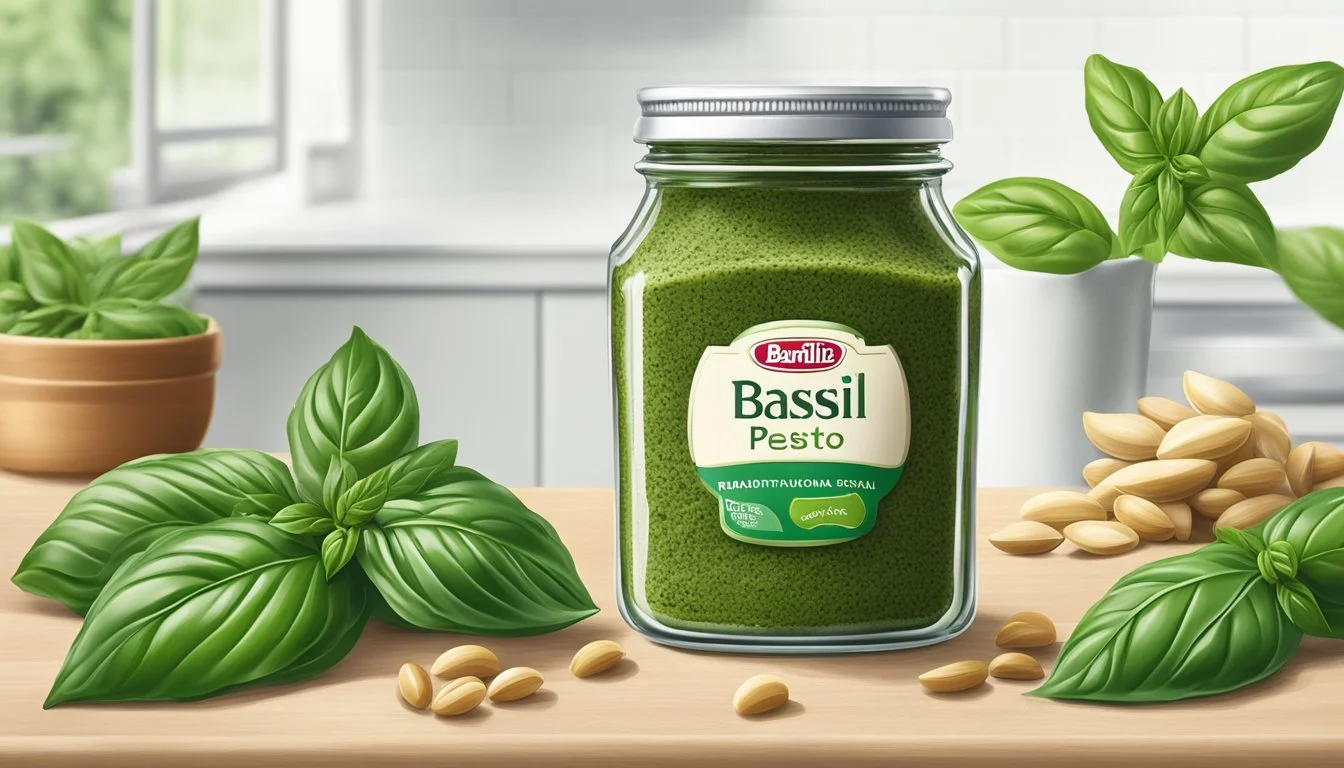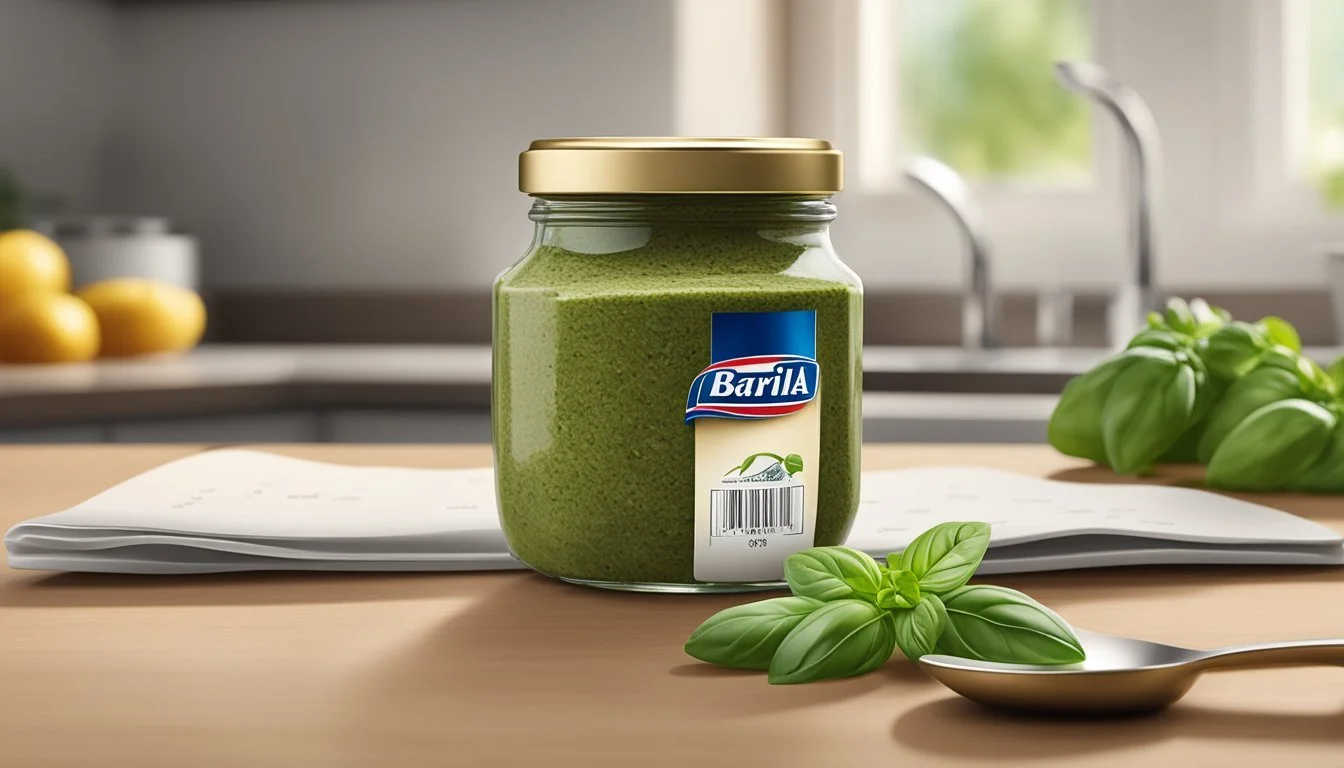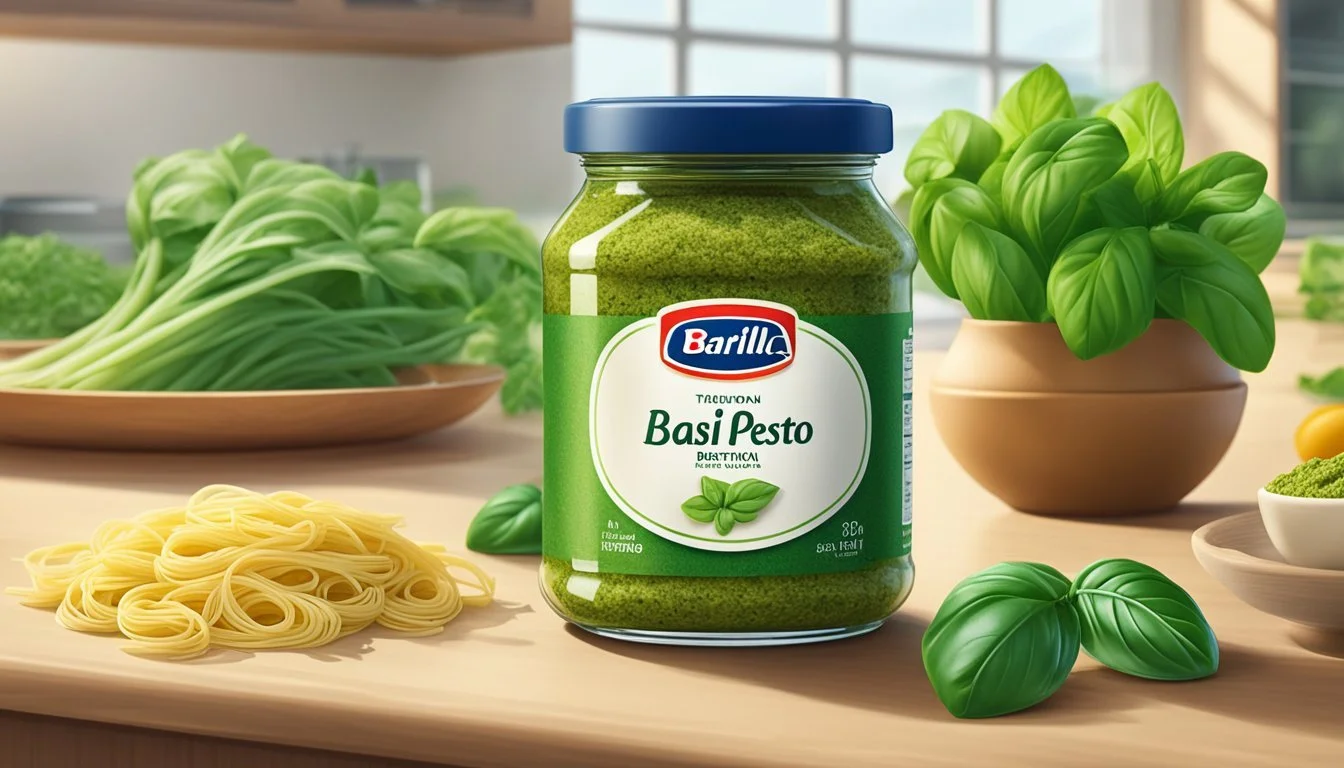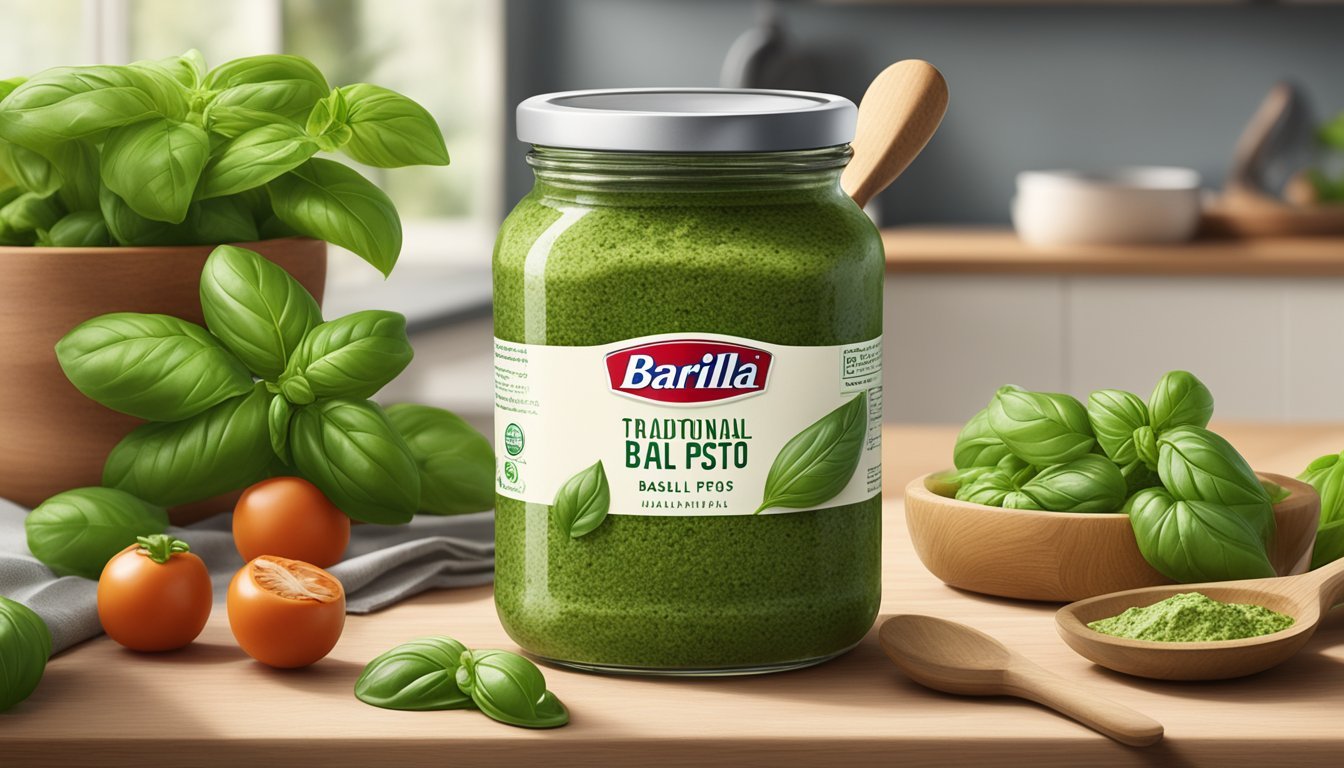How Long Does Barilla Traditional Basil Pesto Last?
Shelf Life and Storage Tips
When it comes to the shelf life of Barilla Traditional Basil Pesto, consumers should be aware of how to best store this Italian sauce to maintain its quality and flavor. Typically, pesto can be kept at peak freshness for various amounts of time depending on its state: whether it's unopened, opened, or homemade. Barilla, a well-known pasta and sauce company, provides specific guidelines for their products to ensure consumer satisfaction and safety.
For unopened jars of Barilla pesto, they recommend using the sauce up to 6 months past the "best by" date, as long as it's been stored properly in a cool, dry place. Once the jar is opened, the timeframe for using the pesto safely and ensuring the best taste shortens considerably. Barilla advises that their opened pesto should be consumed within 5 days if kept refrigerated. The combination of basil, olive oil, pine nuts, and other ingredients in pesto, while delicious, is sensitive to spoilage due to the fresh nature of these components.
Pesto pairs excellently with pasta, which is a staple product of Barilla. Ensuring the pesto is fresh will complement the quality of the pasta, providing a delightful and authentic Italian culinary experience. It's important for consumers to monitor their pesto for any signs of spoilage such as mold, discoloration, or off-odors, to prevent any health risks and to enjoy the pesto at its best.
Understanding Pesto
Pesto is a sauce that originates from Italy and is primarily used in pasta dishes (What wine goes well with pasta dishes?). Its flavor profile and shelf life are influenced by its ingredients and the way it's stored.
Components of Pesto
Pesto traditionally consists of five key components:
Basil: This herb forms the base of the sauce, imparting a fresh and slightly sweet flavor.
Olive Oil: Used to bind the ingredients together, adding richness and preserving the mixture.
Pine Nuts: They lend a buttery texture and a nutty taste, though other nuts can be used as substitutes.
Cheese: Parmesan or Pecorino cheese is commonly grated into pesto for a sharp, tangy flavor.
Garlic: It imparts a pungent aroma and warmth that balances the sauce.
These ingredients are crushed together, traditionally with a mortar and pestle, to create a vibrant green sauce.
Types of Pesto
Pesto comes in various forms, with two primary types:
Jarred Pesto: Commercially prepared and often contains preservatives that extend its shelf life.
Shelf Life: Usually has a
best bydate, after which it can last 1 to 2 weeks in the fridge once opened.
Homemade Pesto: Made from fresh ingredients and lacks preservatives, leading to a shorter shelf life.
Shelf Life: Typically lasts up to 7 days in the refrigerator when stored properly in an airtight container.
Both types should be stored in the refrigerator after opening and can also be frozen to extend their usability.
Barilla Traditional Basil Pesto Overview
Barilla Traditional Basil Pesto sauce is recognized for its authentic Italian taste and quality ingredients. It offers a convenient and flavorful option for pasta dishes and various culinary applications.
Ingredients
Barilla Traditional Basil Pesto contains a blend of basil, cheeses, pine nuts, and garlic, complemented with Extra Virgin Olive Oil. The exact ingredients are as follows:
Basil: Provides the foundational herbal flavor.
Extra Virgin Olive Oil (EVO): Enhances texture and adds richness.
Grated Cheeses (Parmigiano and Pecorino): Offer a sharp, umami taste.
Pine Nuts and Garlic: Contribute to the pesto's nutty and pungent profile.
Nutritional Information
The nutritional profile of Barilla Traditional Basil Pesto is as follows:
Nutrient Amount per serving Calories Specific value not provided Fat Specific value not provided Carbohydrates Specific value not provided Protein Specific value not provided
Portion sizes and specific nutritional content can vary, so consumers are encouraged to refer to the product's packaging for detailed information.
Shelf Life of Pesto
The shelf life of pesto, whether store-bought like Barilla Traditional Basil Pesto or homemade, varies based on whether it is opened or unopened and the conditions under which it is stored.
Unopened Pesto Shelf Life
Store-Bought Unopened Pesto: An unopened jar of store-bought pesto like Barilla Traditional Basil Pesto typically has a shelf life that extends past the "best if used by" date when stored in a cool, dry place. Once this date has passed, it can often remain good for a few months as long as the jar remains sealed and undamaged.
Pantry: Can last several months past the "best if used by" date
Refrigerator: Not necessary until opened
Opened Pesto Shelf Life
Store-Bought Opened Pesto: Once opened, a jar of store-bought pesto's shelf life diminishes. It should be kept refrigerated and is generally best if used within 1 to 2 weeks after opening.
Refrigerator: Up to 2 weeks
Freezer: Not recommended for optimal taste and texture
Homemade vs Store-Bought Pesto
Homemade Pesto: Typically lacks the preservatives found in store-bought versions and therefore has a shorter shelf life. When homemade pesto is properly stored in the refrigerator, it should be consumed within 3 to 5 days to ensure freshness and quality.
Refrigerator: 3 to 5 days
Freezer: Up to 4 months for best quality
Store-Bought Pesto: With preservatives included in many recipes for store-bought pesto, these pestos generally offer a longer shelf life compared to their homemade counterparts.
Refrigerator (Sealed): Can last up to 6 months past the "best if used by" date
Freezer (Opened): Up to 4 months, yet freezing is typically not recommended for store-bought pesto
It is vital to inspect the pesto for signs of spoilage, such as an off smell, discoloration, or mold, before consumption, regardless of its homemade or store-bought origin.
Proper Storage Techniques
Ensuring that Barilla Traditional Basil Pesto retains its freshness and flavor involves storing it correctly. Appropriate storage techniques can significantly extend the longevity of pesto without compromising safety. Different storage methods cater to varying needs for shelf life.
Refrigerator Storage
For refrigerated storage, Barilla Traditional Basil Pesto should be kept in its original jar if unopened. Once opened, the pesto should be transferred to an airtight container to maintain its quality. To further extend its lifespan, one might:
Place a layer of olive oil on top to prevent oxidation.
Ensure the fridge temperature is consistently at or below 40°F.
Refrigerator Life: Up to 1 week after opening.
Freezer Storage
Freezing pesto is the best option for long-term storage. Barilla Traditional Basil Pesto can be stored effectively in the freezer by following these guidelines:
Use an airtight container or heavy-duty freezer bags.
Label with the freezing date for future reference.
Pro Tip: Freezing in small portions allows for easy thawing and usage without defrosting the entire batch.
Freezer Life: Up to 3 months.
Pantry Storage
Pantry storage is appropriate for unopened, shelf-stable pesto. To maintain its quality, the pesto must be stored in a:
Cool, dry place away from direct sunlight and heat sources.
Steady temperature to avoid fluctuation that can compromise the integrity of the pesto.
For Barilla Traditional Basil Pesto specifically:
Do not store opened pesto in the pantry.
Observe the "best by" date for optimal freshness.
Pantry Life: 3 months past the "best by" date for unopened jars.
Identifying Spoilage
Recognizing spoilage in Barilla Traditional Basil Pesto is critical for food safety and quality. Consumers must pay attention to visual changes, odors, and texture differences.
Visual Cues
Barilla Traditional Basil Pesto usually has a vibrant green color due to the basil leaves. Discoloration, such as a dull green or any brown spots, could indicate spoilage. The presence of mold, often seen as fuzzy spots of white, green, or black, is a clear sign the pesto should be discarded immediately.
Olfactory Cues
A fresh jar of basil pesto should have a rich, herby aroma typical of basil. Rancid or sour smells that deviate from the pesto's original fragrance are strong indicators of spoilage. If the product emits a foul odor, it is best to err on the side of caution and not consume it.
Texture Changes
The texture of fresh basil pesto should be somewhat smooth with small recognizable bits of pine nuts or garlic. Any deviation from this texture, such as a noticeable separation of oil, excessive watery appearance, or an overall slimy consistency, is a sign that the pesto is no longer suitable for consumption.
Enhancing Pesto Usage
Pesto, with its distinctive basil flavor, is adaptable in the kitchen ranging from pasta dishes to creative culinary applications. Here's how one can maximize its use.
Pesto in Recipes
Pesto serves as a robust foundation for a plethora of recipes, notably enhancing weeknight dinners with its depth of flavor. When creating a pesto pasta, it is best to:
Toss it with al dente pasta to fully coat the strands, ensuring every bite is infused with the sauce's herbal notes.
Pair with appropriate pastas: Thicker strands such as fettuccine align well with pesto's texture.
For a balanced meal, consider adding protein such as chicken or shrimp, which complements the pesto's richness.
Creative Serving Ideas
Apart from traditional uses, pesto can bring a unique twist to sandwiches and serve as a flavorful dip. Intriguing ideas include:
Transforming Grilled Cheese: Spreading basil pesto on the bread before adding cheese elevates the sandwich with a fresh twist.
Homemade Pesto Dip: Mix pesto with cream cheese or Greek yogurt to create a dip suitable for vegetable sticks or chips.
These applications demonstrate pesto's versatility and ability to enrich simple dishes.
Preservation Techniques
Proper preservation techniques are essential for extending the shelf life of Barilla Traditional Basil Pesto. Minimizing air exposure and utilizing freezing methods can significantly slow down spoilage.
Sealing and Air Exposure
To maintain the quality of Barilla Traditional Basil Pesto, it is critical to limit its exposure to air. Once a jar of pesto is opened, airtight resealing is necessary to preserve the product's freshness. Consumers should ensure that the pesto is stored in an airtight container to protect it from oxidation and moisture, which can degrade the quality of the pesto and lead to spoilage. Using a clean spoon each time the product is used will also prevent introducing contaminants.
Utilizing Freezing Methods
Freezing Barilla Traditional Basil Pesto can extend its usable life for up to 4 months. To efficiently freeze pesto:
Portion the pesto into ice cube trays for easy use later.
Once the pesto cubes are frozen, transfer them into freezer bags, removing as much air as possible before sealing.
This technique allows for convenient thawing of individual portions without defrosting the entire quantity, thereby preserving the flavor and avoiding unnecessary waste.
Special Considerations
When dealing with Barilla Traditional Basil Pesto, it's vital for consumers to consider both dietary restrictions and label comprehension to ensure proper use and enjoyment of the product.
Adjusting for Dietary Restrictions
Barilla Traditional Basil Pesto typically contains ingredients such as Parmesan cheese, which is a concern for those with dairy allergies or following a vegan diet. Individuals with these dietary restrictions should look for alternative pesto varieties or brands that use plant-based cheese substitutes or opt to make fresh pesto without the inclusion of cheese.
Understanding Labels and Expiration
The label on Barilla pesto provides essential information regarding preservatives used and storage instructions. To maintain quality, consumers should adhere to the following storage times post-opening:
Refrigerated: Up to 2 weeks
Unrefrigerated: Not recommended
Freezer: Approximately 4 months
It's important to note that store-bought pesto like Barilla's may contain preservatives that extend its shelf life compared to homemade pesto. Regardless, one should always examine the pesto for any signs of spoilage such as color change, mold, or off smells, and discard it if any such signs are present. Unopened pesto can typically be used 3-6 months past the "best by" date, but this does not apply once the product is opened and exposed to air.
Brand Comparisons
When evaluating the shelf life and quality of Barilla's traditional basil pesto, it is important to consider how it stacks up against its competitors' offerings in similar product categories.
Barilla versus Competitors
Barilla Traditional Basil Pesto is appreciated for striking a balance between flavor and texture. It is suggested that consumers use this product by the "best if used by" date for optimal taste. Barilla packages their pesto in jars which can be stored in a cool and dry area for extended shelf life. Extra-virgin olive oil (EVO) and a controlled amount of salt in the recipe may contribute to both the preservation and the characteristic taste of Barilla pesto.
Competitors such as Legnano and Prego offer their versions of pesto as well. For instance:
Legnano Organic Green Pesto stands out due to its use of Parmigiano-Reggiano, which adds a notable cheesy flavor, although some have noted an unexpected sweetness to it.
Prego Pasta Sauce, Basil Pesto is another alternative which offers a slightly different taste profile from Barilla's pesto, potentially catering to those seeking variety.
It's crucial to consider that different brands may have varying shelf lives and flavor profiles based on their specific recipes and the quality of ingredients such as basil, cheese (like Parmigiano-Reggiano), nuts, and the type of oils used, including extra-virgin olive oil. The type of packaging can also affect the longevity of pesto; Jarred store-bought pesto, such as Barilla's, is generally good for several months past the "best by" date when unopened and stored properly.
Each brand strives to create a pesto that resonates with their audience, emphasizing characteristics like richness, authenticity, and preservation techniques that distinguish them from their competitors. Barilla, a well-known brand in the pasta and pesto market, leverages its reputation to assure consumers of the quality and durability of their pesto, especially when stored correctly.

